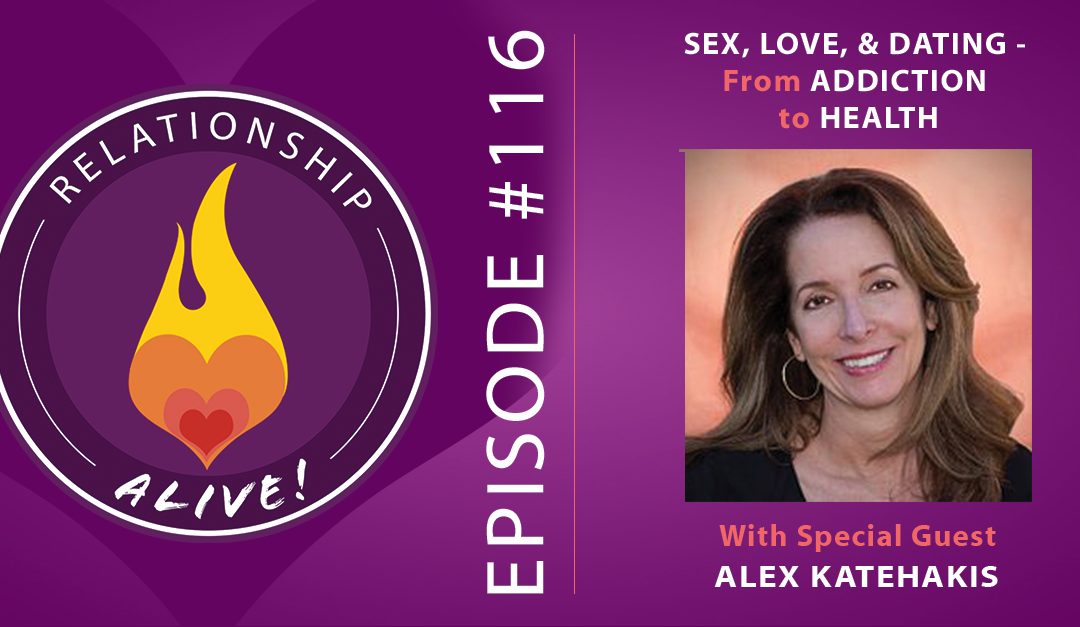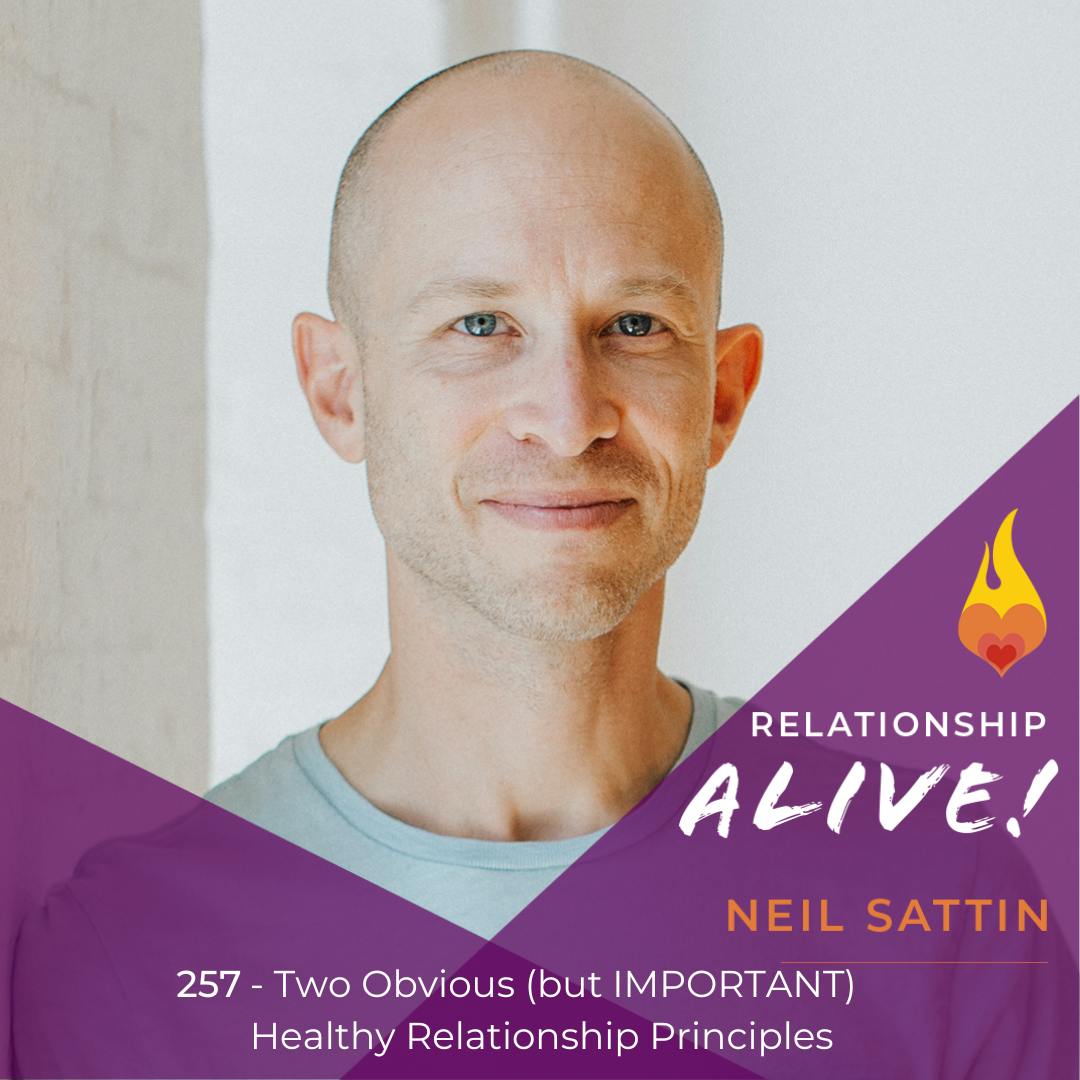Can you be addicted to love, or sex, and - if so - what does that mean? How does the way that your parents raised you - especially when you were really young - affect your sex life? How do you define your own version of healthy sex - so that you’re not just following along with what culture has handed you? And finally - how do you step away from the dopamine and novelty-seeking of dating - and, when you find someone, make the switch to a monogamous relationship? In today’s episode, we are speaking to one of the world’s experts on sex and neurobiology - and especially the treatment of Sex and Love Addiction - Dr. Alexandra Katehakis. Alex’s book, Sex Addiction as Affect Dysregulation, is a must-read for therapists looking to understand the latest on how to approach sex addiction treatment in therapy, and her work at the Center for Healthy Sex in Los Angeles fosters a sex-positive approach to re-discovering sex in a way that’s right for you. Alex is also the author of Erotic Intelligence: Igniting Hot, Healthy Sex While In Recovery from Sex Addiction.
Noticing addictive behaviors: An addiction can be defined as something to which we have a strong predilection for and have little control over our actions in relation to the desire. We may find ourselves preoccupied in our thinking, and find that much of our time is spent either engaging in the addiction or in preparation for the experience of it. Furthermore, unlike other things which we strongly enjoy, an addiction has a certain secrecy and shame surrounding it. This is especially true when the behavior we are engaging in violates our own personal value system.
Love as an addiction: Love is an addictive process. This makes sense in evolutionary and biological terms as it ensures that we bind together with a mate in an intense enough way as to invest in procreating and raising a family. The profound longing and desire that can be involved in falling in love is not necessarily problematic, however thinking about love through the addiction model can help shed light on the pain of breakups, divorces, and endings.
Love withdrawal: How many times have you said, or heard a friend say, that it feels like a limb has been cut off when we lose someone. During endings many people experience the emotional and psychological distress as physical pain- as if their heart is actually breaking. This is true because the same neural pain centers in the brain involved in physical injury are involved in our attachments to others. While it can be very helpful to create boundaries with exes through such actions as blocking and/or deleting numbers, the pain can be visceral.
Changing our automatic patterning: People realize they are in the cycle of addiction when they find themselves doing things they do not want to do anymore and yet, can’t stop engaging in the behavior despite wanting to. It is important at this stage to understand that 1) you do have the capacity to change and 2) it will be a slow process. Changing our automatic patterning is not like turning a speed boat around, rather it is more like turning around a large barge. Neuroscience research validates that this shifting is possible through repeated behavior. The saying is that ‘neurons that fire together, wire together’, meaning that you must do something over and over again to build new neural pathways, and thus, new patterns. The more you engage in the new behavior the more tenacious the neural networks will become and the more integrated this way of being will feel- to the point that it will become the new automatic. As you focus increasingly on the new behavior, the old neural pathways associated with the negative addictions will begin to prune. This is the beauty of neuroplasticity- have some patience with it!
Attunement is essential in building secure attachment. The predilections for addictions of all kinds are often established in early childhood. This is true because, human beings, more than most animals, are nearly entirely dependent on their caregivers for survival. As we now understand from the research on attachment, the first few months of a child’s life are critical in setting up a healthy nervous system. It is the job of the caregiver to be an interactive regulator- giving opportunity for attunement and safe interactions so that the right brain can develop over the first 18 months. There are many ways that parents fail to attune to their child- the severity of the impact depends on frequency, intensity, and ability to make repairs. Depending on the type of engagement from parents children will develop a tendency towards high sympathetic arousal (fight or flight responses) or parasympathetic responses such as freezing, collapse, and dissociation. This dysregulation can then lead to a higher dependence on external supports- thus helping to explain how addictions often stem from an attempt by an individual to regulate affect.
Adaptive strategies for soothing. Early childhood experiences of attachment lay the groundwork and the wiring for lifelong relational patterns. Children who were not met with regulated and present caregivers inevitably find strategies in order to survive and often carry these patterns into adulthood when it comes to handling arousal state throughout their lifetime. Insecurely attached individuals either experience 1) a constantly seeking mentality and dependency on external soothing and/or 2) a high distrust that others will ever meet their needs.
Trapped by the ‘rescue fantasy’: If you had a parent who was dismissive, or avoidant, you likely learned at a young age that you had to manage yourself, by yourself. You may have resorted to creating a rescue fantasy in which someone came to rescue you from the chronic emptiness and loneliness you were experiencing. This may have been a coach, a teacher, a rockstar, a neighbor, or a fairy princess- someone outside of yourself and your family who had the power to alleviate your pain. This is a brilliant soothing strategy in childhood, however it becomes increasingly maladaptive in adulthood in that it creates unhealthy desires and harmful expectations in our relationships. In cultivating the ability to imagine the ideal caregiver, a child feeds their need for attunement, however adults who idealize their lovers as saviors tend to miss critical cues that allow them to assess whether the person they are attracted to is available, safe, and stable.
Need for reinforcing attachment: Only 54% of people in our culture today are securely attached- and this number is likely to shrink further as more families experience increasing stressors and there are fewer two person systems raising children. The fullness, high speed pace, and distraction of daily modern life is making it increasingly difficult for parents to insure they are able to provide their children with adequate attunement. Note that the majority of insecure attachments are not caused by outright abuse or neglect, but rather from an accumulation of misaligned and misattuned moments- microassaults that go without repair or acknowledgment.
Human beings need other human beings for regulation: One thing we know from the accumulating data is that people can develop a secure attachment in a love relationship. It is in our relationships where we a second chance to practice getting our needs met in healthy ways. With a present, grounded, and growth oriented partner it is possible to become more securely attached, love more fully, and have deeper intimacy. That said, long term relationships are not flower fields! As many like to say, if you want to not have any issues then it is best to live alone! Relationships turn up the heat on our underlying issues and bring our habits, patterns, and old beliefs to the surface. While much of our healing, especially of childhood wounds, are our responsibility to mend and tend, this does not have to occur prior to entering a relationship. In fact, some aspects of deep healing depends on the relationship given that we need coregulation to repair. Be on the lookout for a partner who does not have a martyr complex, nor a need for you to be helpless so they can be the ‘fixer’. Look instead for someone who shares your values and is willing to stay present through the pain and discomfort of growing.
How do you switch from courtship into monogamy? We live in a culture that provides ample opportunity for novelty, and relies on a promise of more and better. This creates excitement, yet havoc in the dating world as there is a tendency to doubt what is in front of us in hopes for the newest and shiniest thing that may be waiting around the corner- or one more tinder swipe away. If you are interested in moving from dating into a longer term committed relationship, it is critical that you get clear with yourself about your values. Can you make a list of your top 3 non-negotiables? Example: education, spirituality, wants kids, doesn’t want kids, sense of humor… Get super clear with yourself. This clarity will help you to recognize when a person who fits these values shows up, and will help to ground you in the reality of the person in front of you, thus helping to alleviate the gnawing and often overwhelming urge to keep searching for some fantasy version of a partner.
What to do when you are jonesing… Dating apps, along with porn, offers a dopamine rush that is hard to compete with. When you begin to shift towards wanting to dive deeper into a relationship you may struggle with feeling a lack of this exciting surge. Learn to be fully present with your somatic experience- noticing what is happening for you, what you are craving, and in what ways this helps show you that you are dysregulated. Own your internal experience, and then commit to being more present to your partner. Let the distractions and urges be reminders to yourself to come back to your present experience- there is a plethora of feel good hormones (including dopamine) that can be released when you connect in with your partner and spend time finding out who they are without making assumptions, and getting that juicy surge of oxytocin that comes with intimate connections.
Putting bodies, hearts, and souls together: We need each other to regulate. People know, at least technically, how to have sex- there has been enough emphasis on this throughout our culture- however they may not know how to have quality and truly connecting intimacy. We can put our bodies together, but are we capable of putting our hearts and souls together in a way that has meaning, promotes a sense of safety, while also being arousing and erotic? In order to move into a fuller experience of intimacy, we must learn to track ourselves and our partners. By paying close attention to our internal experiences we can learn to notice moments of dysregulation and from this becoming curious about the underlying need that is being somatically communicated. Once we notice this, we can name it to our partner and from this learn that we can in fact, get our needs met. The experience of getting a need met not only leads to healing, but also to an incredibly erotic, arousing, and passionate sense of deep connection!
Multidimensionality of healthy sex: Healthy sex requires a thorough investigation of who you are sexually at this moment in your life, what you like, and from this putting together a new roadmap for yourself. What is healthy for you right now is likely to be different not only from other people, but even from yourself at an earlier point in your life. Get raw and honest with yourself. What feels good? What kind of touch turns you on? In what ways is the sex you are engaging in a celebration of your sexual values, and in what ways is it not? Look at the multidimensionality of sex- the physical, emotional, relational, and spiritual aspects. Tune into your arousal cycle, your current genital functioning, and any other physical cues that need to be paid attention to. Your sex life will not be fulfilling unless the sex practices you are engaging in aligns with your personal and sexual values.
Get support and go on a sexual diet. If you suspect yourself to be in an addictive cycle when it comes to love, sex, and/or dating apps be sure to reach out for support. Find a therapist, a sex therapist, and/or a support group in your area or online. Love and sex addictions are the result of attachment wounding and thus, are best healed in relationship. Seek out safe others. There may be a time in your healing process in which you may benefit from taking a break from your compulsive patterns (even consider celibacy) in order to gain perspective on your own urgings. This pulling away time is a raw state as you will feel the void of not having ‘that thing’ you are so accustomed to running towards for relief. In these times fellowship can be incredibly helpful- search out people to surround yourself with that know what you are going through. And remember- the brain is capable of rewiring towards healthier habits if you are able and committed to putting in the time and effort needed to refocus your attention and train your brain!
Resources:
Check out the Center for Healthy Sex
Read Alex Katehakis’ newest book Sex Addiction as Affect Dysregulation: A Neurobiologically Informed Holistic Treatment
Find more about Allan Schore’s work here
http://www.neilsattin.com/healthysex Visit to download the show guide, or text “PASSION” to 33444 and follow the instructions to download the show guide to this episode with Alex Katehakis
Our Relationship Alive Community on Facebook
Amazing intro/outro music graciously provided courtesy of:
The Railsplitters - Check them Out


